Module COMX LoRaWAN868
SKU:M031-C
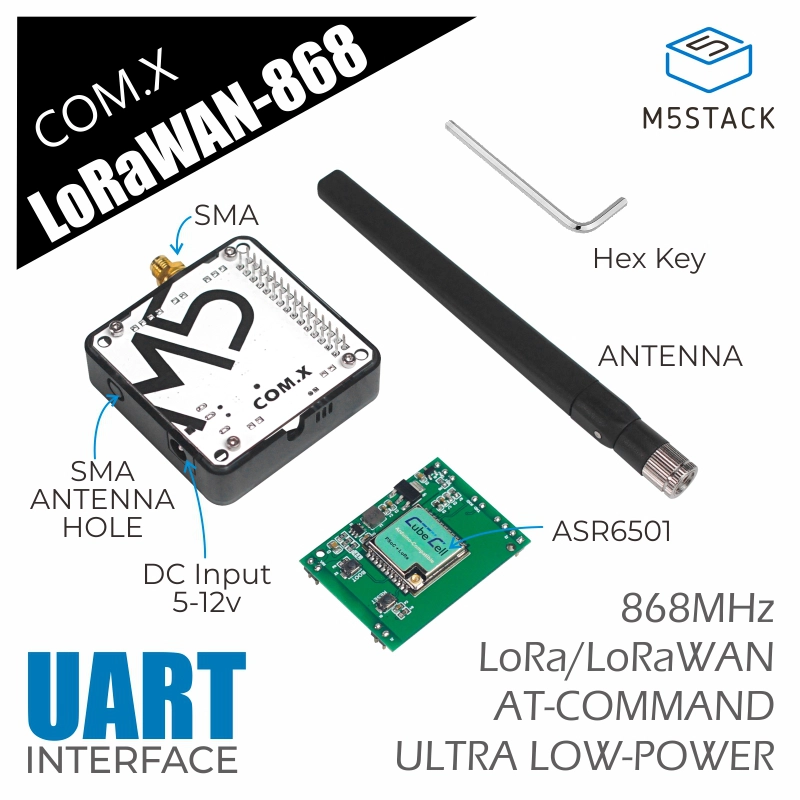
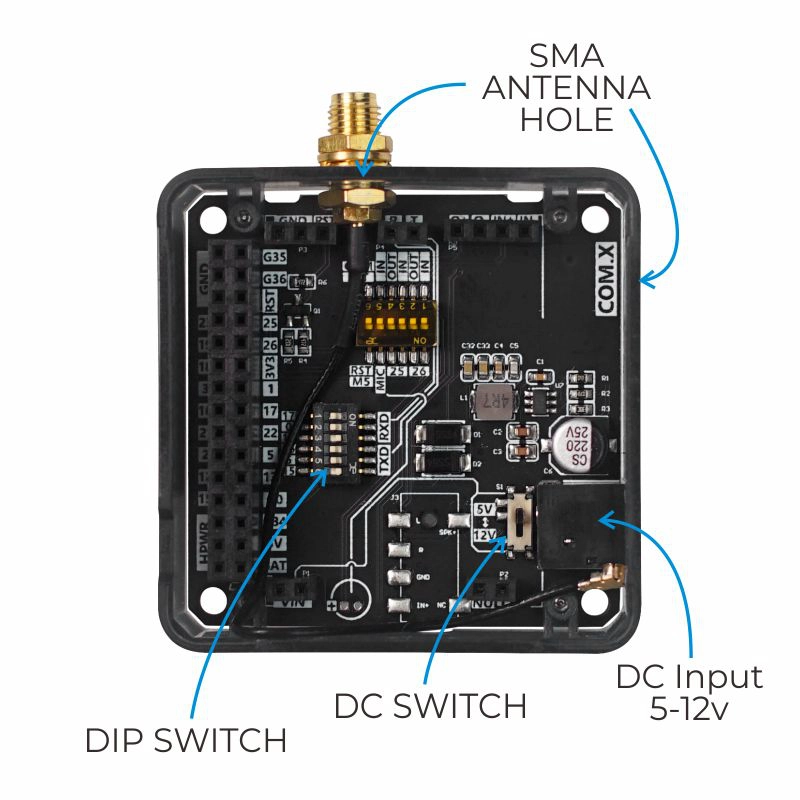
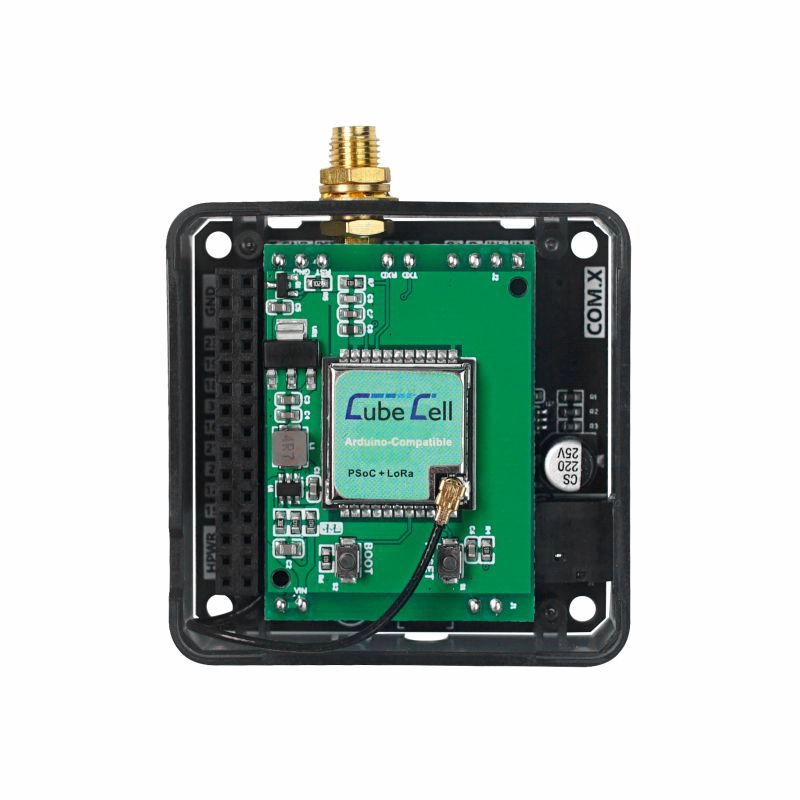
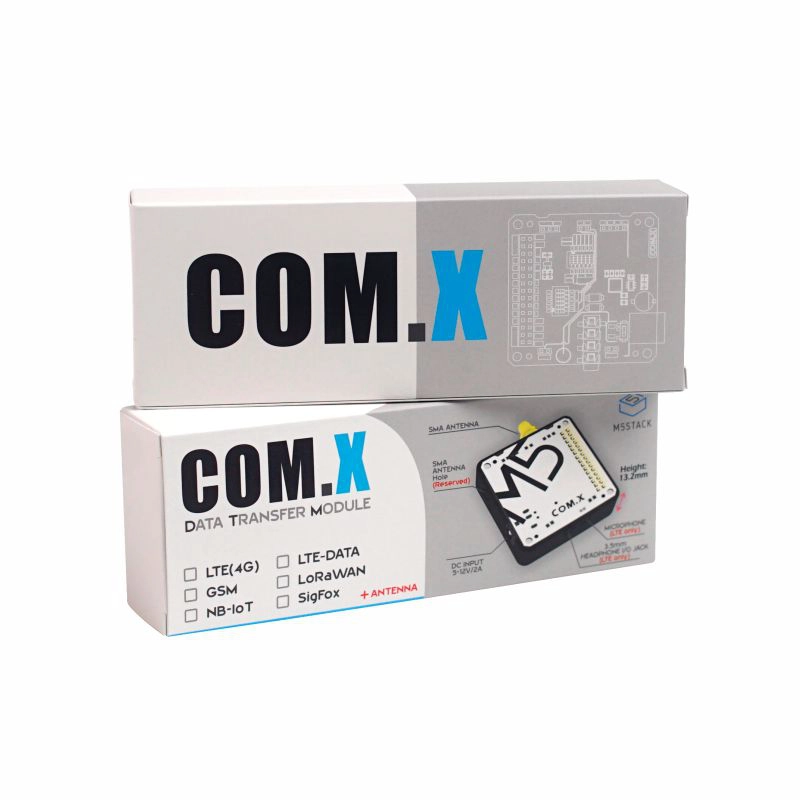
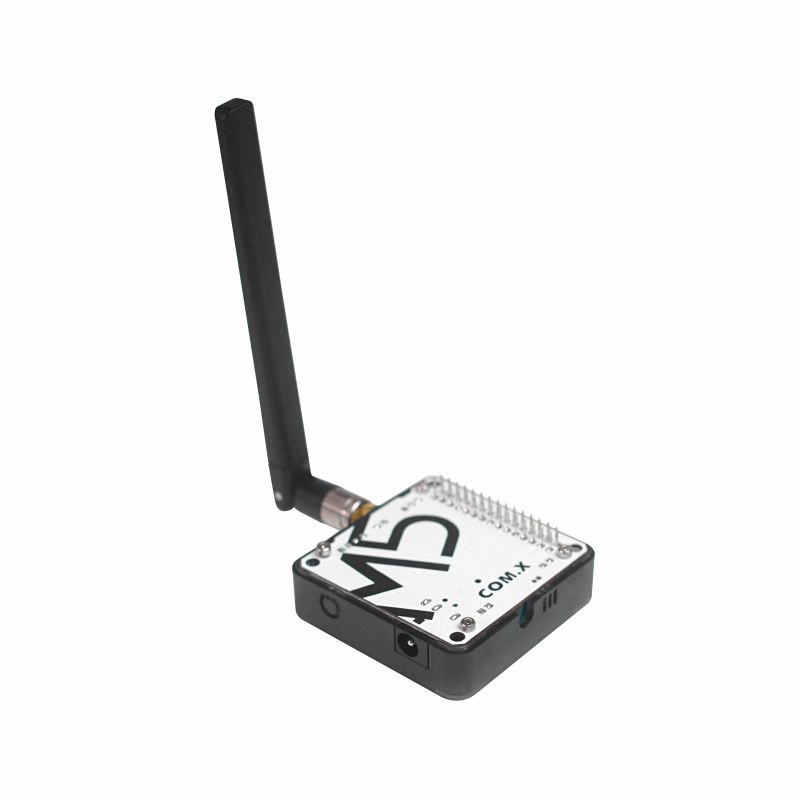
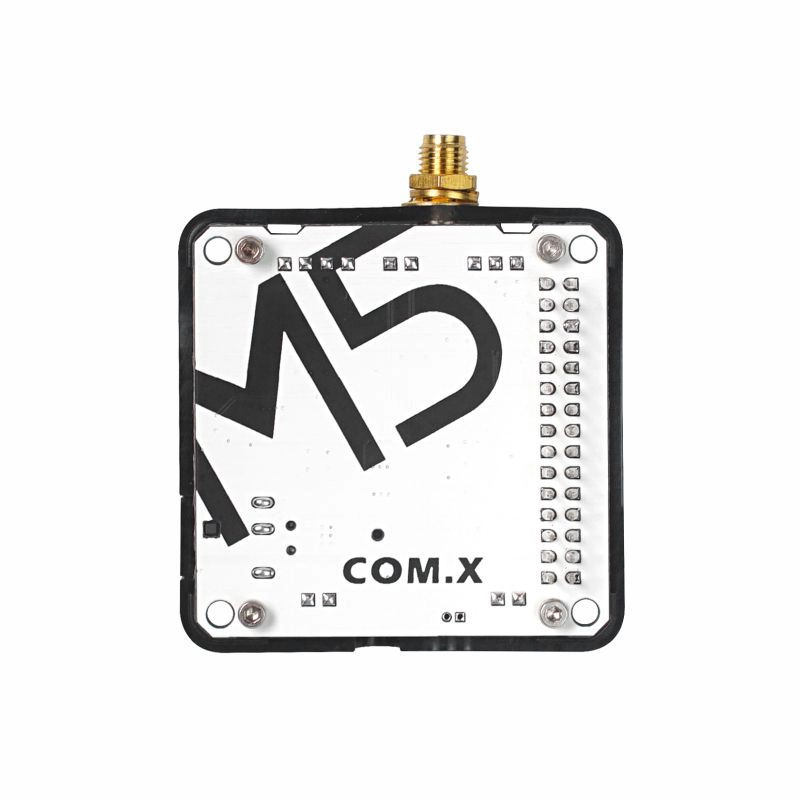
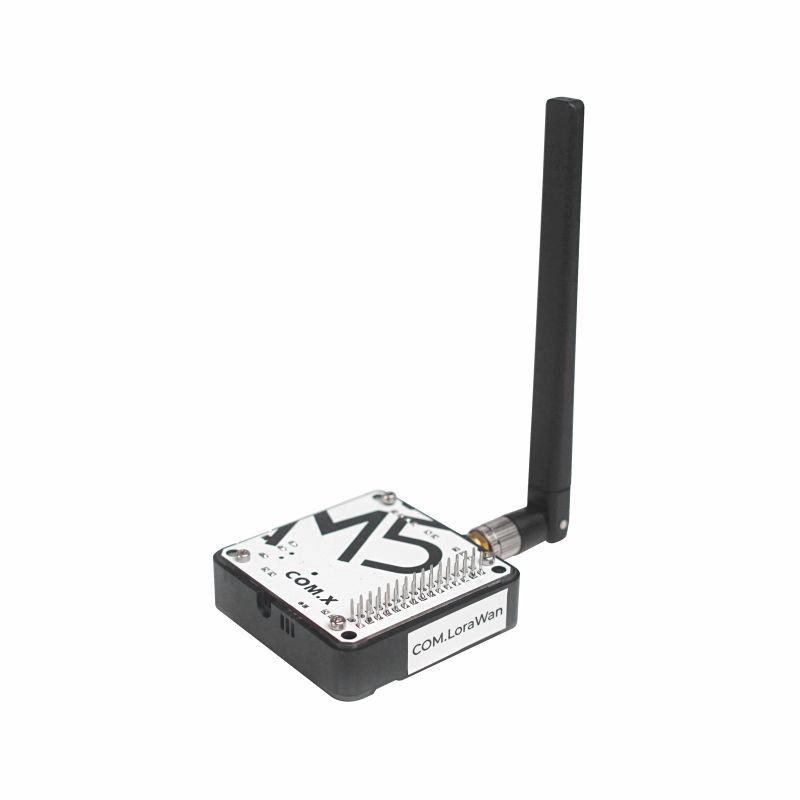







説明
Module COMX LoRaWAN868 は、M5Stack スタックモジュールシリーズの LoRaWAN 通信モジュールです。ノード間通信または LoRaWAN 通信をサポートします。LoRaWAN モジュールは ASR6501 をベースに設計され、PSoC4000 および SX1262 チップを搭載、868MHz 周波数帯をサポートし、超低消費電力設計とし、ディープスリープモード時には消費電流が非常に小さい(3.5μA)です。ユーザーがピン設定を簡便に変更できるよう、DIP スイッチでハードウェア UART ピンを設定可能。必要に応じ ON 側に切り替え、プログラム内でピン指定するだけで利用可能です。モジュール下部に DC 電源ジャックを備え、外部電源供給に対応し、外部アンテナと組み合わせて高品質な信号受信を実現します。本モジュールは、超低消費電力・超小型が求められる遠距離低消費電力通信アプリケーションに最適です。
LoRaWAN は LoRa 長距離無線通信ネットワークのための通信プロトコル・システムアーキテクチャです。階層分けで言えば LoRaWAN は MAC レイヤにあたり、LoRa は物理層です。LoRa アライアンスによってメンテされるルーティングプロトコルであり、主に LPWAN ゲートウェイとエンドノードデバイス間通信のためのネットワークプロトコルです。
注意事項
特徴
- スタック可能な設計
- LoRa、LoRaWAN 両対応
- モジュール:ASR6501 ベース
- サポート周波数帯:868MHz
- Radio IC: SX1262
- マイクロコントローラ:PSoC® 4000 series MCU (ARM® Cortex® M0+ Core)
- インターフェース:UART
- コマンドプロトコル:AT コマンド
- 超低消費電力
- UART 通信インターフェース:
- ボーレート:115200
- ストップビット:1
- データビット:8
- パリティ:なし
- 終端文字:なし
含まれるもの
- 1 x Module COMX LoRaWAN868
- 1 x SMA アンテナ
アプリケーション
- 自動遠隔検針
- スマート交通・スマート駐車場
- 遠隔灌漑・環境モニタリング
仕様
| 仕様 | パラメータ |
|---|---|
| DC コネクタ仕様 | 5.5mm |
| 製品重量 | 40g |
| 梱包重量 | 75g |
| 製品サイズ | 54.2 x 54.2 x 13.2mm |
| 梱包サイズ | 165 x 60 x 36mm |
操作説明
EU868 対応の主な国と地域
オーストリア / ベルギー / チェコ共和国 / デンマーク / フィンランド / フランス / ドイツ / イタリア / オランダ / スウェーデン / イギリス / アンゴラ / アンドラ / ブルガリア / エストニア / インド / マルタ / フィリピン / ポルトガル / ロシア / スペイン / スイス / ザンビア
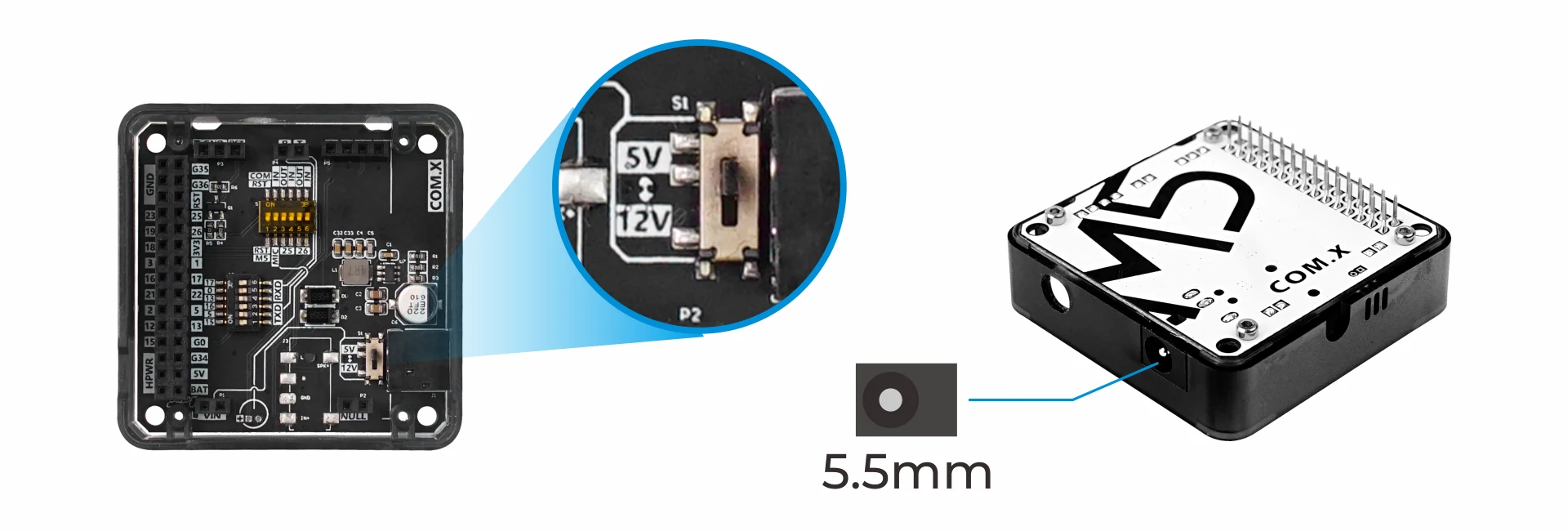
回路図
Module COMX モジュール接続ベース回路図
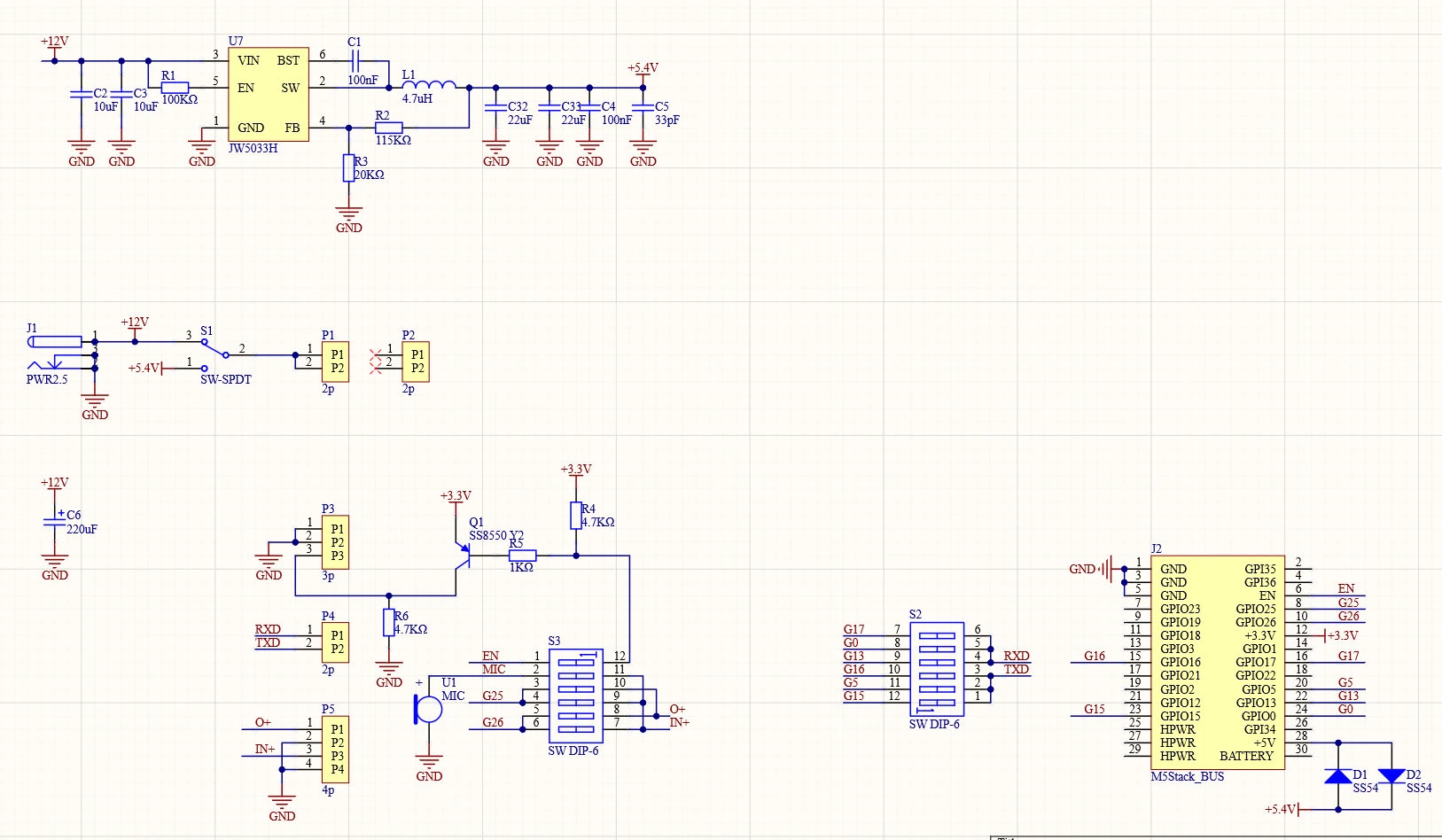
ピンマップ
ピンマップ
M5-Bus
| PIN | LEFT | RIGHT | PIN |
|---|---|---|---|
| GND | 1 | 2 | |
| GND | 3 | 4 | |
| GND | 5 | 6 | |
| 7 | 8 | ||
| 9 | 10 | ||
| 11 | 12 | 3V3 | |
| 13 | 14 | ||
| TXD (SW) | 15 | 16 | RXD (SW) |
| 17 | 18 | ||
| 19 | 20 | TXD (SW) | |
| 21 | 22 | RXD (SW) | |
| TXD (SW) | 23 | 24 | RXD (SW) |
| 25 | 26 | ||
| 27 | 28 | 5V | |
| 29 | 30 |
製品サイズ
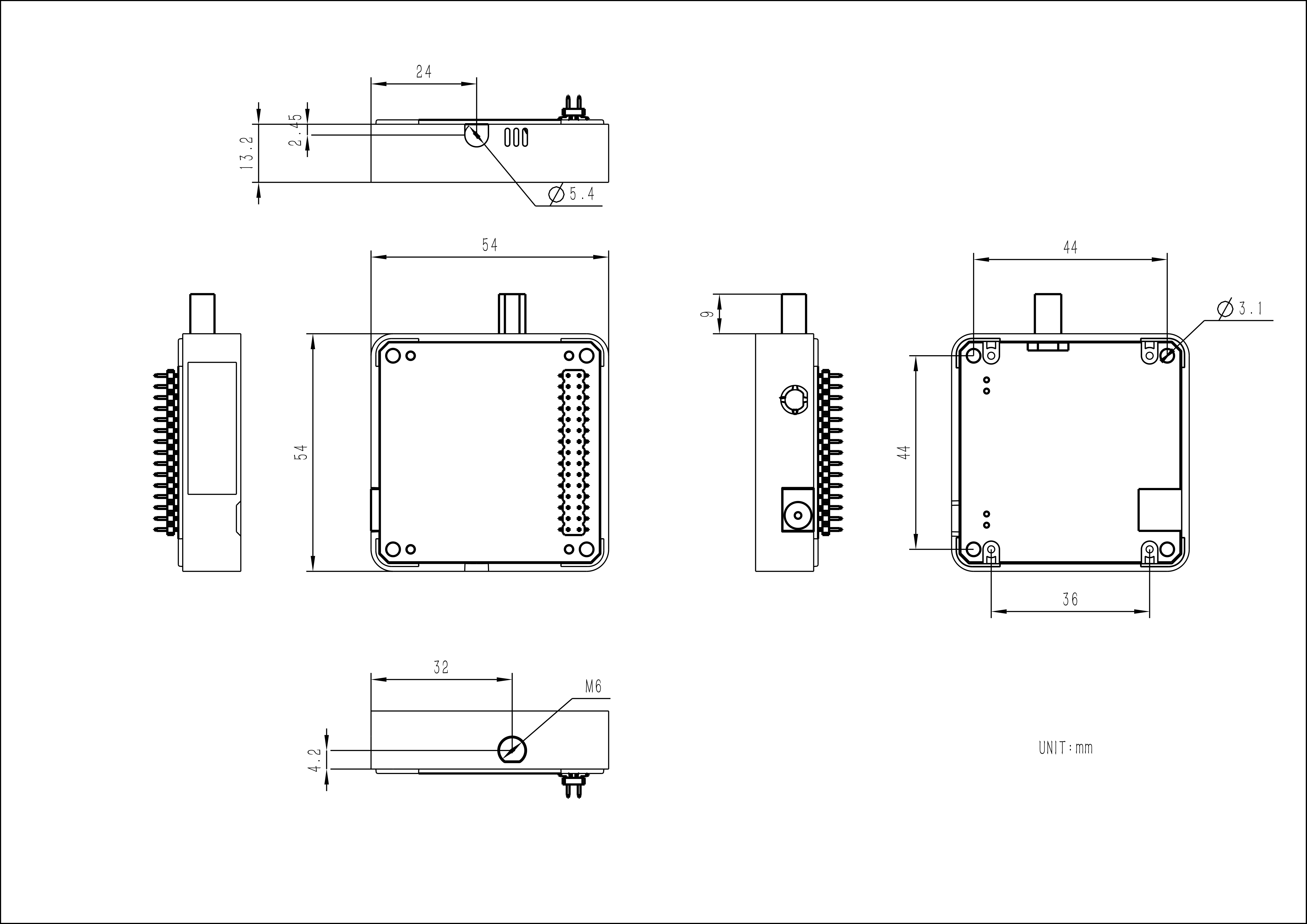
データシート
ソフトウェア
Arduino
UiFlow1
通信プロトコル
Easyloader
| Easyloader | Download | Note |
|---|---|---|
| Module COMX LoRaWAN868 Example Easyloader with M5Core | download | / |